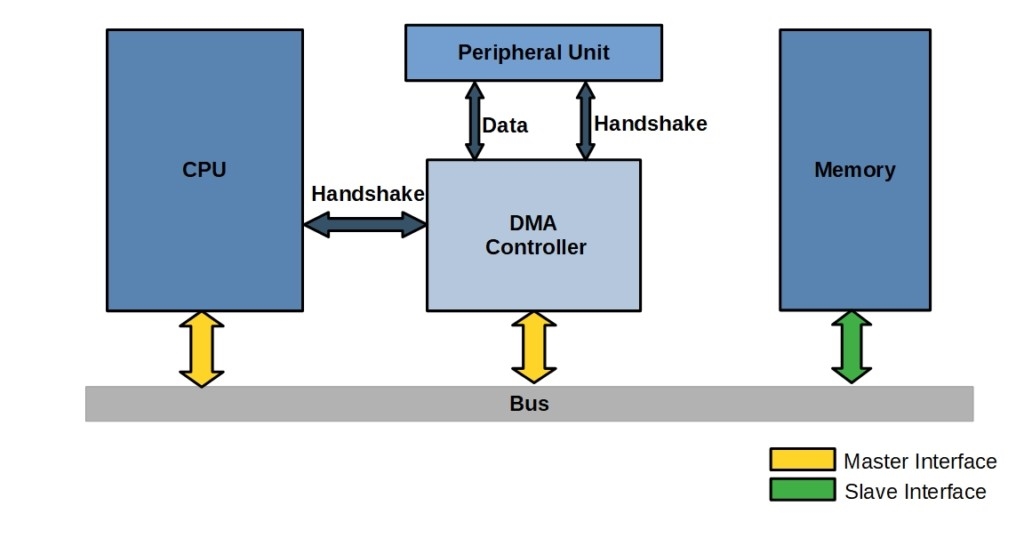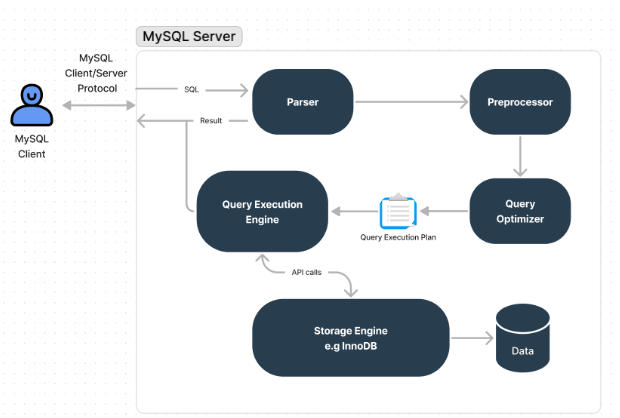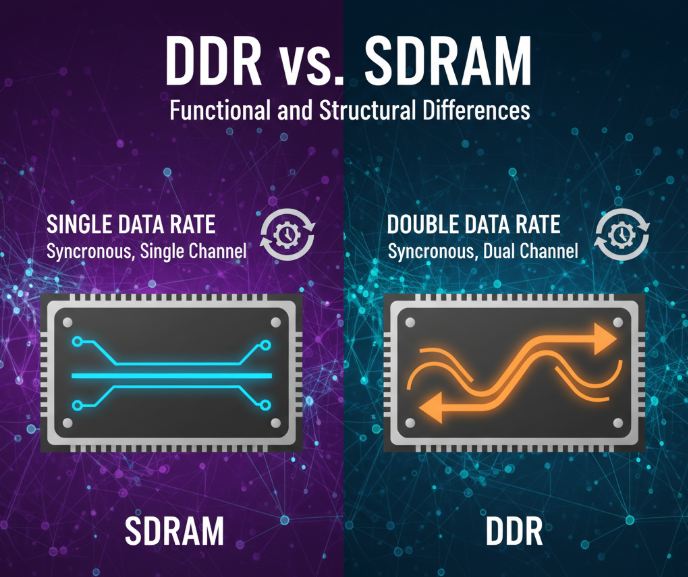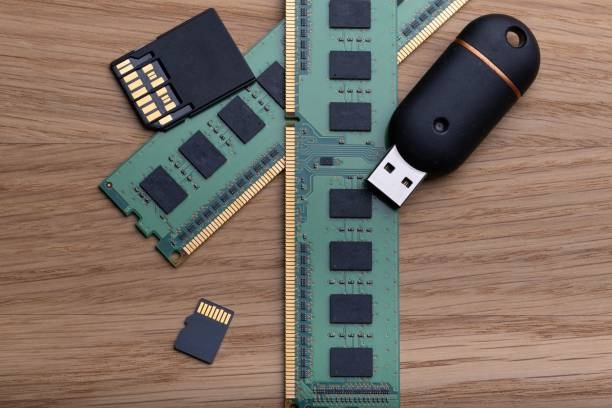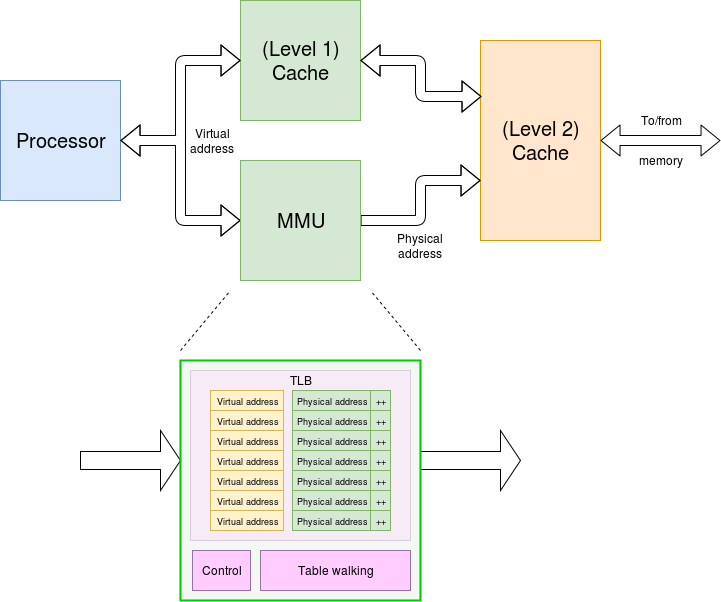Introduction
The memory market has evolved to include many different types of memory products. The following summarizes several common memory types and their typical applications.
1. NAND Flash
NAND flash is a type of non-volatile memory that uses a cell array optimized for high-density storage, offering a cost-effective solution for large-capacity solid-state storage. NAND flash provides large capacity and relatively fast erase/program speeds, making it suitable for bulk data storage. Common applications include USB flash drives, solid-state drives, eMMC, and UFS.
NAND technologies have evolved from SLC to MLC, TLC, QLC, and PLC.
Speed/price ranking: SLC > MLC > TLC > QLC > PLC
Capacity ranking: PLC > QLC > TLC > MLC > SLC
Current mainstream solutions are TLC and QLC. SLC and MLC target industrial, enterprise, and defense applications where high write performance, low error rates, and long endurance are required.
2. DDR and LPDDR
DDR stands for Double Data Rate Synchronous Dynamic Random-Access Memory (DDR SDRAM). It is a volatile memory. Although JEDEC announced the DDR5 standard in 2018, the final specification was completed later. DDR5 aims to double memory bandwidth over DDR4, with data rates starting at 3200 MT/s and up to 6400 MT/s, and a nominal voltage reduction from 1.2 V to 1.1 V for lower power consumption.
LPDDR is Low Power Double Data Rate SDRAM, a low-power, small-footprint variant of DDR commonly used in mobile devices. The latest standard, LPDDR5, targets high-performance mobile applications, while LPDDR3 and LPDDR4(x) remain widely used in the market.
Differences between DDR and LPDDR:
Applications differ. DDR is widely used in tablets, set-top boxes, automotive electronics, digital TVs, and other smart devices where higher data rates, higher density, and stable performance are required. LPDDR is optimized for lower power consumption and smaller footprint, so it is mainly used in battery-powered mobile devices.
LPDDR evolved from DDR: LPDDR generations initially tracked DDR generations (LPDDR2 from DDR2, LPDDR3 from DDR3). From the fourth generation onward, development diverged: DDR increased performance mainly by raising the core frequency, while LPDDR improved effective performance through larger prefetch sizes and other architecture changes. In commercial deployment, LPDDR4 reached consumer markets earlier than DDR4.
3. eMMC and UFS
eMMC (embedded MultiMediaCard) uses the MMC interface standard and integrates high-density NAND flash and an MMC controller in a single BGA package. eMMC modules include flash management functions such as error detection and correction, wear leveling, bad block management, and power-loss protection. eMMC simplifies storage design and reduces board footprint by providing NAND flash plus controller in a standard package.
In short: eMMC = NAND flash + controller + standard package.
Advantages of eMMC include simplified mobile product storage design, rapid update cycles, and accelerated product development.
UFS (Universal Flash Storage) can be considered an advanced evolution of eMMC. Like eMMC, UFS is built from multiple flash chips and a controller, but it supports full-duplex operation (simultaneous read and write), so its performance is effectively higher than eMMC, which operates in half-duplex mode.
4. eMCP and uMCP
eMCP combines eMMC and LPDDR in a single multi-chip package and is a common memory standard for smartphones. Compared with traditional MCP, eMCP includes a built-in NAND controller, which reduces host processor overhead and simplifies management of larger flash capacities. Both eMCP and embedded eMMC designs aim to reduce device thickness and save board space.
uMCP combines UFS and LPDDR in a single package and targets higher performance and power efficiency compared with eMCP. uMCP aligns with the trend of replacing eMMC with UFS to meet 5G smartphone requirements.
For phone manufacturers, supply constraints in memory components make integrated solutions such as eMCP and uMCP attractive for cost control and supply chain flexibility. High-end smartphones may use PoP (package on package) with discrete LPDDR and CPU to achieve higher memory interface frequencies and improved system performance, at the cost of increased design complexity and manufacturing cost.
uMCP integrates LPDDR and UFS, offering high performance and large capacity while reducing board area by up to about 40% compared with PoP plus discrete eMMC or UFS solutions. This enables higher-density, lower-power storage designs for smartphones.
Summary:
eMMC = NAND flash + controller + standard package
UFS = advanced eMMC (full-duplex operation)

eMMC: half-duplex
UFS: full-duplex
eMCP = eMMC + LPDDR + standard package
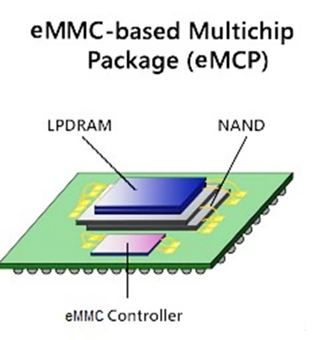
uMCP = UFS + LPDDR + standard package
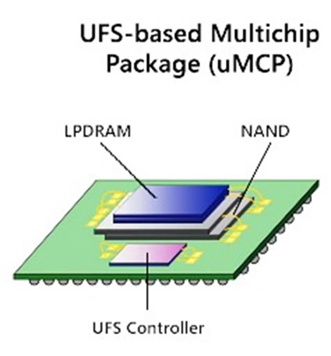
 ALLPCB
ALLPCB


